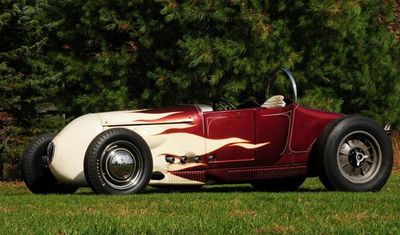Von Dutch
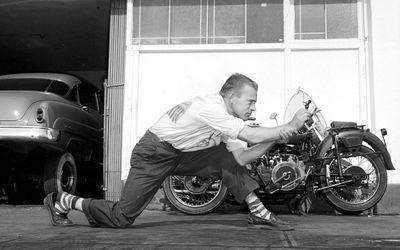
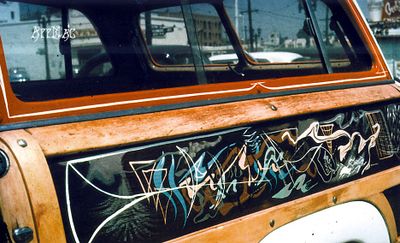
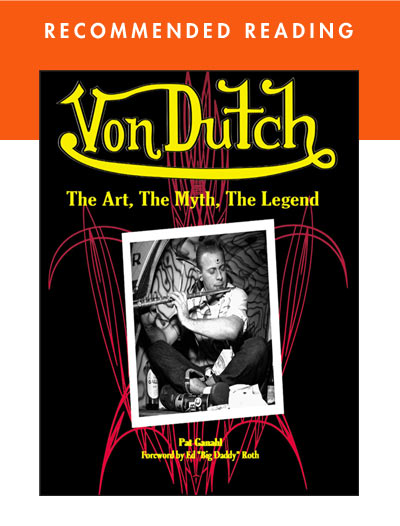


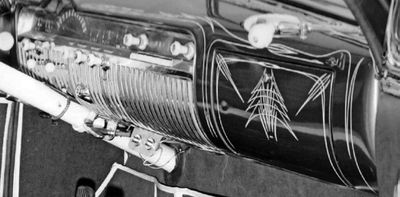

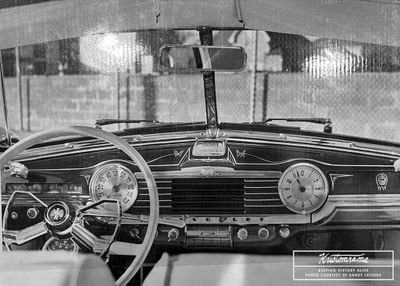



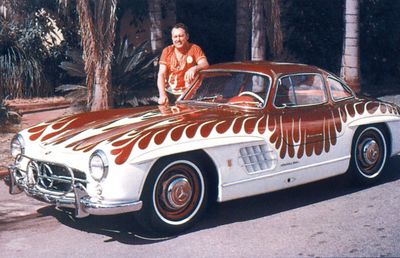


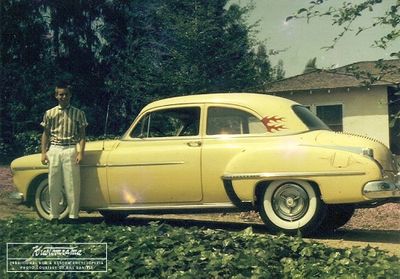

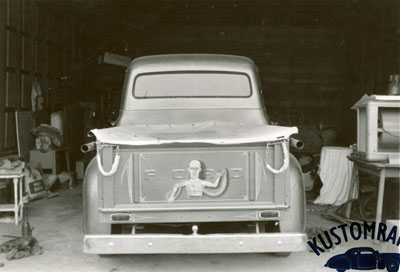











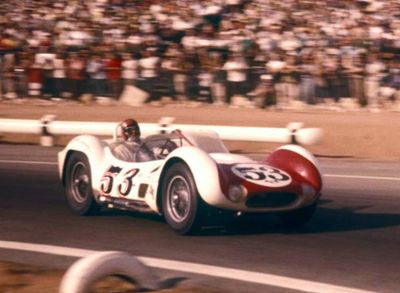

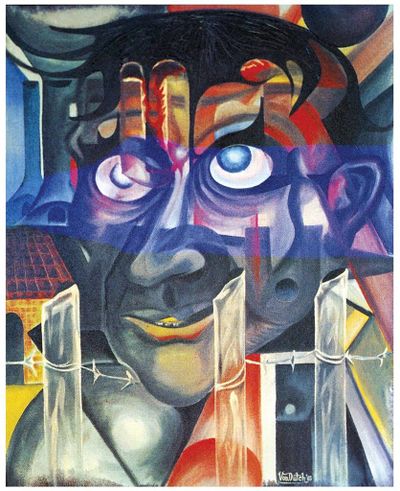
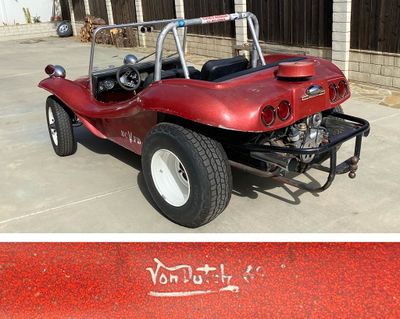




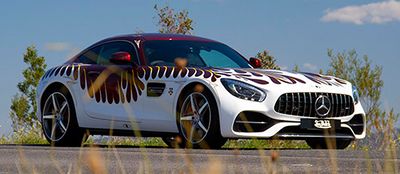

Kenneth Robert Howard (September 7, 1929 - September 19, 1992) is known as the father of the modern pinstriping.
Contents
- 1 Son of a sign painter
- 2 Dutch
- 3 The Kid Can Stripe!
- 4 I DON'T STRIPE BOATS
- 5 Motorized Booted Roller Skates
- 6 An Accident of Necessity
- 7 Long Straight Lines
- 8 Dutched or Ditched?
- 9 Hill Climb Action
- 10 Barris Kustoms with a K
- 11 A Multi-Talent
- 12 The Stolen Letters
- 13 The Three-Eyed Girlfriend
- 14 The Flying Eyeball
- 15 Eccentric
- 16 "No one tells me what to do or charge!"
- 17 "Keith, pull it inside the shop, I have a great idea!"
- 18 The Crazy Arab's Competition Body Shop
- 19 Von Dutch and The Kid
- 20 National Fame
- 21 Red Red Wine
- 22 "If you keep poor, the struggle is simple"
- 23 Tempe, Arizona Shop
- 24 Back in LA
- 25 Suspicious Mind
- 26 Coffee, Beer, Reefer, Jazz, and a Flute
- 27 Many Stories
- 28 "You've never made love 'till you've made love to a BUNCH of crazy women!"
- 29 Living and Working on a Bus
- 30 Machinery
- 31 Beware of the Dog
- 32 Antique Motorcycles
- 33 Von Dutch the Artist
- 34 One Man Army
- 35 Recommended books about Von Dutch
- 36 Cars Painted or Pinstriped by Von Dutch
- 37 Motorcycles Painted or Pinstriped by Von Dutch
- 38 Von Dutch's Personal Rides
- 39 References
Son of a sign painter
Also known as Von Dutch, Dutch, or J.L. Bachs (Joe Lunch Box), Howard was born in Compton, California. His father, Wally Howard, was a sign painter, and Kenneth learned to letter and pinstripe professionally by the age of 10. He was one of the original guys that experimented with pinstriping, and he was the first to develop a distinctive style and his striping was the first modern technique to become really popular.[2]
Dutch
While attending Compton High School, Kenneth excelled in track and field, and he was referred to as "the fastes man in LA." Family members gave him the nickname "Dutch" because he was "as stubborn as a Dutchman." He added the "Von" prefix later as an artistic signature.[3]
The Kid Can Stripe!
Von Dutch was working at George Birop's motorcycle shop in the vicinity and had a reputation for being a good striper and painter. At the time motorcycles were about the only vehicles that had pinstriping on them. One of the bikes rebuilt by the shop needed to be restriped, Dutch's father who was a sign painter, didn't pinstripe vehicles, but he used striping brushes in his work. Kenny had seen how to use them, and he tried to stripe the vehicle. The next day, when he showed it to the guys in the shop, they couldn't believe that the Dutch kid had done it. In order to prove his skills, Kenny striped another motorcycle while they were watching.[2]
I DON'T STRIPE BOATS
In his youth, back in the 1950s, Keith Christensen used to hang out at Von Dutch's shop, "which was a garage attached to a motorcycle shop in Compton," he told Sondre Kvipt of Kustomrama in 2020. "I started, out of first, with idle curiosity and then admiration of the works of Von Dutch. I would go over after class at high school and just "hang out."" Keith recalled that there always was something to look at on the walls or a job in progress by him. "What a world of real art. As I remember, he had a picture on the wall of a giant battleship, with a handwritten caption on it by him, saying "I DON'T STRIPE BOATS.""[4]
Motorized Booted Roller Skates
When Keith used to hang out with Von Dutch, his talent and interest were mainly motorcycles, not cars. "He had small inventions sitting around that he was in progress with and they were genius in their design." In 1954, on one of Keith's frequent visits to Von Dutch's shop, Dutch called Keith over to a side workbench. The bench was away from the painting area, and after he had lifted a box out from under his bench, he said, "look at this, Keith. It is wild and unique!" Dutch pulled out two roller skate boots with the skates on the bottom, and Keith recalls that he had a gleam in his eye, as he was proud of sorts to his new creation.[4]
"He had installed a Cox-049 model airplane engine to the bottom of one of the skates. He knew that I had fooled with model airplanes as a younger man. He had the shaft of the plane engine extended and mounted on a pillow block by one of his customers. He put a keyway in the main shaft that stuck out and a keyway into one of the wheels. After sliding the one wheel to the shaft, he inserted a case hardened key and tightened a bolt on the very end." According to Keith, he went to the trouble of first spinning the wheel, which turned the motor over. "Then he got a can of model airplane fuel and a dry cell battery, which he had built into a fanny pack to be worn by the person who had the skates on. He laid the shoe on its side, hooked up the battery to the spark plug, primed the engine, and spun the wheel over. A couple of cranks later, the engine started puttering, and then, all of a sudden, it started howling and turned the skate wheel at a slowly increasing pace. WOW! IT WAS A MOTORIZED BOOTED ROLLER SKATE!"[4]
Von Dutch even showed Keith how he put the fanny pack on and squatted down and hooked up the battery to the spark plug and primed the engine with a squirt of gas from an oil funnel laying there. "He said, "Keith, I have one problem that manifolds into a bunch." First, after hooking up and priming, he would start to roller skate until the engine took hold. Then, all hell would break loose. He said, "when I first tried it, Keith, the drive wheel was on my skate on the left." When it took off, it wanted to turn hard right, so he had to lean to the left and look out! He said, "you either go around in a circle or the skate comes out from under you. Either way, you crash!!" Dutch also told Keith that when he put on the fanny power pack and pushed his foot forward, it took off, and he had to drag the tip of the skate to slow it down. "The little motor, if I remember right, is 1/2 hp, so you can slow it easily, just don't take your foot off the ground as the motor will go wild and run the rpm's up into the thousands and finally explode, as he didn't have a throttle control in his fanny pack." Keith has often wondered if one foot-powered skate would run a person slowly around in a circle. "It was a great moment for me, as I could see the gleam of invention in his eyes, and he had divulged its structure to me. He quietly walked off and back to painting. Out of his inventive world and into the reality of making a living painting..."[4]
An Accident of Necessity
Von Dutch recalled that his particular style of pinstriping sort of grew out of an accident of necessity. While he was working for George Barris and Barris Kustoms guys would bring their newly customized cars to the shop, asking George and Sam them to fix them up. An easy way to cover up sloppy bodywork was with paint.[2]
Long Straight Lines
Credited for starting the abstract pinstriping craze so popular with custom cars and motorcycles, Von Dutch told Terry Cook that the hardest thing to paint was a long straight line, "which is of course true. When I asked him if it was factual that he was the first to paint flames on a car he said he first did it on motorcycles, but "Hell, the Lafayette Escadrille painted flames on their airplanes in WWI." One time he did a full flame job on a Mercedes 300 SL Gullwing coupe and he said "I thought they were goIng to lynch me for desecrating a shrine.'"[5]
Dutched or Ditched?
If you wanted your car custom-striped in Southern California back in the 1950s, you would ask for it to be "Dutched." Keith Christensen remembers that there were many days that he would arrive at the shop and Von Dutch wasn't there. "There was always a line of four or five cars waiting to be pinstriped. When we heard the roar of a motorcycle coming down the road, we would all look up in unison to see him pulling in on his 1940s Indian motorcycle. A wreck of a bike with a side shifter hooked to the gas tank and suicide clutch. He would park the bike, put the kickstand down and walk over to the door of his shop and unlock it. Totally oblivious to the customers standing there and their cars sitting in line. He would turn on the lights inside, turn on the radio, get some of his brushes out and a few cans of paint set on the bench. He would stroll around the inside of the shop, "Yawn", stretch and walk over, turn the radio off, lights off, and come out and lock the door. Everyone watching him the total time - again, ignoring everyone, he would start his bike and roar away down the highway !!"[4]
The next day the same people would be patiently standing in front of his shop, "hoping for Von Dutch to work on their car. A couple of times, he would walk over to me and say "C'mon and we would walk over to a tiny restaurant next door and have a sandwich. All the total time the patient customers would just stand there! When the mood and the setting were right he would produce some of the greatest works," Christensen recalled. "Real Artistry in the finest!"[4]
Hill Climb Action
Late 1954-55 there was another incident at Von Dutch's shop that according to Keith Christensen is worth relating. "The usual small group of folks waiting to get striping done was gathered up and around his little shop - a two-car garage attached to Floyd Burke's Motorcycle shop. Four or five cars formed the usual morning line in front of the door of the shop. We were all milling around, amongst the cars. This was about 10 on a Monday morning. As all of us were chatting and milling about when we heard a rumbling sound coming from up Atlantic blvd, where the shop was located. As the sound grew stronger, we realized it was a motorcycle. A snorting, popping, misfiring sound, and here came Von Dutch on his old motorcycle. He thumped and thudded into the driveway between the cars and real quick we all stood aside and made room. He reached down and put the side shifter on the gas tank, into neutral and the bike sputtered to a stop. He kicked the kickstand down and climbed off. He was dressed in his usual T-shirt and Levi's - no helmet, no glasses, just him. His motorcycle was either, as I recollect an old Indian or Harley. He gave a short hi' and opened his garage door and started the day. First in line pulled in and he popped on the radio, turned on the lights and his Monday morning started."[4]
Keith wasn't at the shop for any work, he just hung around enjoying the activity that ensued. "Von Dutch started with a unique way of preparing to stripe a car. He would walk around the car and scope the style of car and the paint job and its color, then go over to a vast stack of pint cans of enamel paint. He would pick one, open it up go over to the car and put a dab of paint on the fender and stand back and look. Satisfied, or he duplicated the same routine with another color. Then after being satisfied and deciding, he would wipe the dabs of paint off the car, turn around, get a brush and go to work. He had a board like painters use. I think they call it a pallet. He'd pour some of the paint onto the board and bring out a brush called a sword brush, he told me its name many times, then slurp it back and forth into the paint."[4]
Keith watched Von Dutch draw a straight line, quite often, the full length of the car in one stroke. "A perfect, same width, straight line. I was fascinated with it. The artistic work he did. I would really spectate and stay out of the way. I was just a kid, about 17, in an adult world of custom cars and watching the real art of pinstriping of cars, done by an artist. That day, he thinned out or should I say finished the cars pretty quick. It was a Monday, and he had some energy. He finally took a break and walked outside the building, where I was standing and a conversation ensued. He related his Sunday activity to me. He was mad! He said he took his Motorcycle to the Hill climbs out in La Mirada. A small city east of Compton where his shop was located. The spot was a popular one that I had been to many times as well. It was at the dead-end of Rosecrans Blvd. on Beach Blvd. The same blvd that the famous Knott's Berry Farm just south of there, is located. There were a group of low hills there that were not very populated. In that era of motorcycles, the majority used were English bikes- Triumph, BSA, Norton, etc. They would start at the bottom of the hills and get a run at it and climb up the steep side of the hill to the flat area on top. There were numerous trails that motorcycles had made over the past times. Dutch grumbled and said his bike wouldn't do it! I asked do what, and he said get up that damn hill. He said he tried a bunch of times and just proceeded in digging a bunch of ditches up the side of the hill. He said, "I had too much power." Well, in talking, I didn't say anything negative as you never did that with Dutch, but to myself, here he was using a 300lb bike, with a suicide clutch and a rigid frame (no springs). I could envision him getting a running start, and as he slowed down, he had to back-shift to a lower gear, which meant he had to put the foot clutch in (it wasn't on the handle barrel it was on the left side and was a pedal, It took the magic of pushing the pedal in slamming the gear down one and popping the clutch all at the same time. One heck of a fete going up a steep hill. He said, "I fell down about halfway up and had to drop the bike onto its side to keep it from sliding down the hill with me on it." This was why the bad mood for a Monday morning. He then told me of his grandiose plans hopping that old bike up, thinking more power was the answer. I looked over at the bike and you could see all the dirt and rocks stuck in the street tires and I knew his Sunday venture that he was telling me..."[4]
Barris Kustoms with a K
George Barris hired Von Dutch on a part-time basis to do paintwork for him. The first job Von Dutch did for Barris Kustoms was to paint the business sign on the outside of the building. According to himself he fooled with the spelling and came up with a "K" instead of a "C" to spell custom, and thereby establishing the Barris' phrase "Kustom Car."[6] While still working out of his shop on 7674 Compton Avenue Barris's Custom Shop used the phrases "Kustom Automobiles" and "Kustom Auto Painting" in their advertising. So I guess this kills Von Dutch's story.
A Multi-Talent
Von Dutch was a multitalented artist. In addition to pinstriping, ha was also a gunsmith, kustom painter, knife maker, sign painter, inventor, customizer, and a fine artist. Von Dutch also did a lot of special effects for movies and was a consultant for period movies because he was a gun expert. The man was a genius and could make something out of anything. He was mostly interested in motorcycles but did also customize some cars. One of the cars he restyled was based on a Cord and a Cadillac, so he named it the Cordillac. Another automotive creation by Von Dutch was his truck the Kenford.[7]
The Stolen Letters
Keith Christensen remembers having a sandwich with Von Dutch when he suddenly pulls a letter out of his pocket and waved it cussing! "He said it was a letter to his girlfriend and he couldn't figure out why she hadn't got his previous letters. On the back of the envelope was the most beautiful desert scene penciled on it by him. It was so perfect! It even showed an uncanny dimension, all on the back of that small envelope. Someone at the postal service was stealing his letters for the art they had on them."[4]
The Three-Eyed Girlfriend
Von Dutch related a story to Christensen one time. "He said he and his girlfriend went to a party and before the party, he sat her down and made her look straight ahead and try not to blink. He proceeded to make an exact duplicate of her eye on her forehead dead center. Size, color and all including small creases. He said he got a duck-billed hat, much like they wore in the 1920s and had her put it on over the eye. Pulling it down far enough to hide that perfect, third eye! He said, "I instructed her to face people directly, don't turn, don't blink, then pull up the hat slowly." He said "Oh man" what a startling response I got from everybody!" The more they partied, the wilder the responses!"[4]
The Flying Eyeball
Von Dutch claimed that he started drawing flying eyeballs at the age of 18.[8] His sister Virginia Howard Reyes told Sondre Kvipt of Kustomrama that she was there the first time he drew it, and she could confirm that her brother drew it in 1948.[7] Dean Jeffries on the other hand claims that he invented the trademarked Flying Eyeball in 1951. According to Dean, Kenny used to paint a third eyeball on his forehead. This gave Jeffries an idea, and in 1951 he designed a logo with an eyeball and wings that he later trademarked. The logo is known as "The Flying Eyeball". Kenny kept using it, and Jeffries never bothered to make a deal out of it. Jeffries still owned the right when he passed away, but somebody else had started making big bucks out of the design together with the Von Dutch Brand.[9] Virginia Howard Reyes recalled tha Ed Roth created another version of "The Flying Eyeball" before Dean Jeffries. "Dean Jeffries drew one with a roller skate on it, Jeffries eyeball is his own creation and not the same as Von Dutch's, and no one is fighting over Jeffries eyeball because it never became as popular as Von Dutch," she told Kustomrama.[7]
Eccentric
Von Dutch was known as an eccentric artist. In an interview with Hot Rod Magazine March 1977, he tells about a guy visiting his shop bugging him to stripe his car. He really got him mad, so he decided to give him a little surprise, as he put cobwebs and spiders all over his car. Another customer who was foolish enough to pressure Von Dutch into a quick job he didn't want to do got a striping job that wouldn't dry, as Von Dutch had mixed a lot of oil into the paint.[6] In Hot Rod Magazine April 1989 Pat Ganahl also tells stories about a firetruck Von Dutch was hired to do traditional pinstriping on for a station in Arizona. Once completed Von Dutch had flamed the truck instead. When racers brought him grille inserts from Model A's or 32s, half the time he would stripe them upside down. Pat had also heard a story about a customer that got a car striped. When the customer got back to the shop Von Dutch had pinstriped one side of the car differently than the other. When brought the car back to Von Dutch, Von Dutch would tell him: "Who can see both sides of your car at the same time? Why should they be the same? This way, you get two different designs on your car to enjoy for the price of one."[2] Also if somebody tried to dicker on the price, Von Dutch would raise the figure instead of lowering it.[6]
"No one tells me what to do or charge!"
Keith Christensen vividly remembered a young man that once pulled his 1940 Ford into the shop to have it striped. "He told Dutch he wanted $40.00 of pinstriping maximum. No more! Dutch stood there for a moment, then turned around went over to his bench and got a pint can of striping paint (a bright red), opened it, turned around and sat it upside down, with the lid off, on the hood of that black 1940 Ford. It ran down and into the cracks and the front. The kid was hopping up and down in a panic and Dutch told him, "there is your $40.00 dollars worth, now pay me" He stated, real loud, "No one tells me what to do or charge!" With that he started on one of his many projects on his bench. The kid drove out with one heck of a piece of Art! The eccentricity was so strong, in Dutch, that a person almost admired it! I called it total independence, not answering to anybody no matter what it cost him! The rest of the boys sitting in line all were shocked and really apprehensive about him doing anything with their cars," Keith recalled.[10]
"Keith, pull it inside the shop, I have a great idea!"
In late 1954 Keith Christensen bought his first new car, "a 1955 Buick! Polar white and beautiful dark green leather inside. I drove a 1950 Olds 88" before that. It was SUPER fast, but not enough design with all of the new cars out on the market." When Keith pulled into Dutch's shop he saw it and said "Keith, pull it inside the shop, I have a great idea!" "Not knowing what he had in mind and too scared to ask, I pulled it in. "He said those portholes on the side are super cool!" They were the first of the perfectly round portholes. I stood back and he started masking and taping down both sides. There sat my beautiful, NEW Buick, all stock, not customized, yet and at his mercy! Boy, I was scared! He got a small airbrush and proceeded to paint bright "RED" flames coming out of the portholes and running down the sides to the front doors. He was super happy! He said, "They look great. They just fit" I stood there grinning and agreeing with him. I was stunned when he said, "Hey Keith, it's on the house, I've been wanting to do one ever since I saw them." Well, I drove home and into the reality of, "what will my folks say?" I was only 17 and they had cosigned on the car. I hid it around the corner in a friend's driveway. I told my folks a fib, that it was being tuned. I finally brought it home and they were much better about it than I thought. They were so interested in my endeavors, that it was accepted. One solace was, I had started the Coachmen car club at my house a year earlier and when the members saw it they couldn't say enough good about it!! That was in 1954 and it was such a new world of customizing cars, that this just re-enforced the desire to make an outstanding car out of whatever you drove and that was just the beginning of my building that Buick into a real custom car."[4]
The Crazy Arab's Competition Body Shop
Von Dutch got a little too moody and eccentric for Barris Kustoms, so he moved his operation uptown to "The Crazy Arab's" Competition Body Shop at 7201 West Beverly Boulevard in Los Angeles in 1955.[11]
Von Dutch and The Kid
After Von Dutch moved, George Barris asked Dean Jeffries, aka "The Kid" if he would sublease a shop space in the Barris Kustoms Lynwood shop. Dean Jeffries used to hang around Von Dutch at the beginning of his career. In the book Dean Jeffries 50 Fabulous Years in Hot Rods, Racing and Film Dean admits that it was Von Dutch that learned him to pinstripe. As Dean spent a lot of time around Von Dutch, the duo became known as Von Dutch and "The Kid".[9] Before Dean "Jeff" Jeffries rented space at the Barris Kustoms shop he was working out of George Cerny's Cerny's Custom Shop.[12]
National Fame
In 1955 Von Dutch made a personal appearance at the 1955 Motorama where he striped a 1927 Studebaker for 10 days, he achieved national fame in Car Craft February 1956.[13]
Red Red Wine
In 1956 Von Dutch pinstriped and airbrushed Bill Daniels' 1950 Oldsmobile. Bill was 18 years old when he stopped by to get the car Dutched. It featured louvers in any area available. 200 in the hood, 100 on the deck lid, and on all interior garnish moldings, and Von Dutch told him that anyone crazy enough to have louvers on the trunk deserves flames which he airbrushed. "He also individually striped each louver, and there were hundreds. He didn't want anyone watching, said to go home, come back in 8 hours and guaranteed, you will be happy," Bill told Sondre Kvipt of Kustomrama in 2020. "When I first made the appointment, he said to be sure and bring a half-gallon of red wine along with the car."[14]
"If you keep poor, the struggle is simple"
Von Dutch said in a 1965 interview, "I make a point of staying right at the edge of poverty. I don't have a pair of pants without a hole in them, and the only pair of boots I have are on my feet. I don't mess around with unnecessary stuff, so I don't need much money. I believe it's meant to be that way. There's a 'struggle' you have to go through, and if you make a lot of money it doesn't make the 'struggle' go away. It just makes it more complicated. If you keep poor, the struggle is simple."[5]
Tempe, Arizona Shop
In the early 1970s Von Dutch ran a shop on Princess Drive in Tempe, Arizona. At the time, he had a partner called "Heavy". Heavy was a "non-producer" and the partnership didn't last long.[15]
Back in LA
Terry Cook worked at Hot Rod Magazine from 1972 to 1974. While he was working for the magazine he heard that Von Dutch was back in the LA area after "hiding out" in Arizona for years. "I sought him out as I wanted to meet the legend," Terry told Sondre Kvipt of Kustomrama in 2020. "He was an amazing, talented, funny and interesting guy. He was literally from another time, dimension, or galaxy. He was working for his long time patron Jim Brucker at Cars of the Stars in Buena Park. Dutch was a true Renaissance man who could fix or build anything out of wood, metal, glass or whatever substrate was on hand. He was a locksmith, clocksmith, gunsmith, mechanic, engraver, car and motorcycle fabricator and painter, welder, sign painter, and pinstriper all rolled into one. When I met him he was only 43, but it must have been a lot of hard years of abusing his body with alcohol and tobacco as even then he looked “old” with lots of facial wrinkles and failing eyesight."[5]
Suspicious Mind
Terry Cook recalled that Von Dutch was very suspicious of him when he first met him at his shop and later at his rented home in Buena Park. "Even after I showed him my name in the masthead of HOT ROD and showed him my driver’s license to prove my identity, he was still not convinced. He told me he had never paid income tax and I eventually surmised because he was possibly mildly paranoid schizophrenic (my own diagnosis), he feared the IRS might be looking for him. He was a modern-day hermit of sorts."[5]
Coffee, Beer, Reefer, Jazz, and a Flute
Over time Terry Cook would visit Von Dutch periodically in his shop in Buena Park. "When he worked, he had a military-style web belt with all sorts of wrenches, tools, etc., hanging from it, so they were always handy. Because his eyesight was failing, he often wore a flip-up/down jewelers magnifying glass that positioned the lenses about 3 inches in front of his eyes when it was time for close up work. And he always seemed to wear army boots and denim bib overalls. When you looked at his engraving and pinstriping, you could see it was not as precise as it might have been in his earlier years. He would rise and set with the sun. He would drink coffee in the morning and drink Coors beer in the afternoon and smoke reefer if it was available. No drugs harder than marijuana. With the jazz radio station in the background, he would occasionally pick up his flute and play along with the radio. Not a great flutist, but better than you or me," Cook recalled.[5]
Because he drank too much, Terry soon learned it was wise not to be around him in the later afternoon as the alcohol often made him belligerent. "I never attended them but at the annual Rat Fink Reunions with Ed Roth, Robert Williams and other Kustom Kulture artists and legends, I understood they didn't want Dutch around. The reason? In the evening he would become unruly, and he often packed a gun. He was a bad drunk. Being paranoid and a little bit nuts, I've said that "Von Dutch was not playing with a full deck, but all his cards were aces!"[5]
Many Stories
According to his sister Virginia Howard Reyes most of the stories being told about Von Dutch are just stories. Some are somewhat true, but almost all of the stories on him are all different because he never gave a straight answer, and liked to play with you. When he told you something, you believed it, and he got a kick out of it. According to Virginia he never lied, he hated liars and was very honest. He wasn't eccentric as a young boy, but since he was quite different from the norm, his family always knew he had something special in him.[7]
"You've never made love 'till you've made love to a BUNCH of crazy women!"
Dutch liked to goof on people. Terry Cook never verified if Von Dutch was actually in the military or if there ever was a military institution in Valley Forge, Pennsylvania. Still, he remembers one incredible story he once told him about how he was committed to a military asylum in Valley Forge for a while. "It was because he brandished a firearm under the nose of an officer. That part, I believe. When institutionalized, he said at night he would not take the "go to sleep" pills issued to him. When the guards were occupied with playing cards or whatever, he would pick the locks to get out of his building and sneak across the encampment and pick the locks to get into the women's dorms. He told me, "You've never made love 'till you've made love to a BUNCH of crazy women!"." An incredible story, "which doesn't mean it was true," according to Terry.[5]
Living and Working on a Bus
After a controller from the building inspector's office started bugging Von Dutch for having antiquated machinery in his shop, he decided to move into a public transportation bus, since there is nothing in the vehicle code that says anything about how old the machinery can be.[6]
When Brucker closed Cars of the Stars and moved all his belongings to a large fenced compound in Santa Paula, north of Santa Barbara, Dutch lived there in the small sleeping compartment in the rear of his bus. It was a 1950 GM TGH-3102, 27-foot-long, with a 270-cu.in. GMC straight-six. The front 2/3 contained his machinery, lathe, drill press, industrial compressor, and associated hardware. When he would work on a Steve McQueen movie he would park the bus on the movie set, live in it, and make whatever props were needed. The bus was restored and was later owned by Steve Kafka of Arizona.[5]
Machinery
Periodically Terry would visit Dutch in Santa Paula. "When he took me into his bus, he warned me, "Don't touch any of the machines, they're all electrified." The bus was rumored to be a trade out for a pinstriping job. Dutch hated the concept of money and preferred to trade." According to the 1977 Hot Rod Magazine article, one of the things Von Dutch enjoyed doing most was building and working on machinery. Building an engine from scratch, see it grow, have it make heat, and power, would beat Frankenstein's monster to Von Dutch.[6]
Beware of the Dog
Terry recalled that his pet, possibly half Huskie/half-wolf, was chained under the bus. "I don't know if it had a name or a gender. You always kept your distance from Dutch's pet, whatever it's name or gender. I heard a story from Dutch that some people were approaching the bus and Dutch waited until just the right moment, then warned the people not to get close to the dog. That was at the same time that the dog bolted for the strangers from under the bus. Dutch's warning shout was timed so the chain would reach full extension just as the dog just about reached the strangers. And Von Dutch would then laugh his cackle laugh."[5]
Antique Motorcycles
Von Dutch spent a lot of time restoring antique motorcycles with Bud Edkins.[6] Once, when Terry Cook visited him in Santa Paula, he asked Terry to climb aboard his motorcycle sidecar. Terry believes the motorcycle was an old Indian. The sidecar was a flat ramp he had built for carrying a second motorcycle. "We drove across the street to the liquor store so I could run in and buy another six-pack or two of Coors. When I came out in the parking lot he was driving in slow circles with the wheel of the sidecar balanced floating a foot off the ground!"[5]
Von Dutch the Artist
Dutch was a lot of things, but first and foremost, he was an artist. Terry Cook remembers one of his objet d'art hanging from the ceiling at Cars of the Stars was a 4 foot wide by 2 foot high sheet of clear plexiglass. "On one side he painted a cut down motorcycle. Matching up when seen from the other side there was a naked man with his arms extending forward to the front axle where the forks should be and rear legs folded to contain the rear wheels. The two images lined up precisely and the surrounding background was clear regardless of which side you viewed it from." Cook has a relative who is ingrained into the highest level fine arts museums in the USA. "I've asked her. "How come this painting is worth a fortune? I don't understand." That's all a mystery to me. But now that I think of it after seeing some of Dutch's art, I know when I see his brilliance. It's like a modern Picasso."[5]
One Man Army
One time Terry Cook visited from New Jersey he called the late Phil Engledrum, "a schlock but successful magazine publisher who lived in Santa Barbara. I told him I was up the road a bit in Santa Paula at Dutch's, and to come up and visit. Among other titles, Phil owned Vans & Trucks and a gun magazine. He was a devout gun freak and brought along a $600 Olympics competition German quality air rifle as well as a $600 scope for same. For a while, we sat, and, shooting out the window of Dutch's shop we repeatedly "plinked" the weather vane of the building 100 yards away with Phil's totally accurate air rifle. Then Dutch told Phil to turn around in the shop, and rather than shooting out the window, "Shoot that 4 x 8 sheet of aluminum over there leaning against the wall of the shop." We shot several times and each time the lead projectile would hit the aluminum, flatten out and slide down to the floor." Then Dutch reached up over his workbench and brought down an air rifle he had built. "It looked like an old cavalry weapon except it had a 4-inch diameter stainless metal ball or chamber mounted just ahead of the trigger guard which was charged full of compressed Nitrogen. He chose Nitrogen so there would be no condensed water in it if he had used compressed air. He reached to the butt of the stock and with his fingernail, deftly slid open a small brass sliding door. He tilted the rifle a bit and a ball bearing rolled out of the stock and into the waiting palm of his hand. He closed the door with his fingernail, opened the breach and inserted the ball bearing into the chamber. He turned and fired at the aluminum sheet. The ball bearing went through the aluminum, clean through whatever other sheets of metal were stacked behind it including the wall of the shop."[5]
Dutch told Terry he made those air rifles in two different bore sizes which were predicated by the size of the ball bearing he used. "This was yet another Von Dutch innovation like his motorized roller skates. To put it simply, it was a lethal air rifle. Being racist to the core, he called it his "Ni**er Chaser." Raised in Watts and being paranoid, he had a fear and hatred for black people. " Since possession of air rifles is not subjected to the same restrictions as conventional firearms, it was Dutch's methodology to outwit or sidestep the laws enforced by the local constabulary. "Did I mention he was a genius, even if he was a bit mad?"[5]
Recommended books about Von Dutch
- Von Dutch: The Art, the Myth, the Legend - By Pat Ganahl
- The Art of Von Dutch - By Aaron Kahan
- Kustom Kulture: Von Dutch, Ed "Big Daddy" Roth, Robert Williams and Others - By Ron Turner and Robert Williams
- Sundays with Von Dutch - By Tony Thacker and Richard Karl Koch
Cars Painted or Pinstriped by Von Dutch
John Lane's 1924 Ford Model T Roadster Pickup
Paul Sylva's 1927 Ford Model T Roadster
Jack Chrisman's 1929 Ford Model A Tudor
Tom Pollard's 1929 Ford Roadster
Jim Helmuth's 1932 Ford Roadster
Manuel Gonzalez's 1940 Ford Coupe
Bruce Gonzales' 1941 Willys Coupe Gasser
Jerry Campbell's 1948 Chevrolet Fleetline Aerosedan
Buster Litton's 1949 Ford
Richard Clar's 1949 Oldsmobile Coupe
Bill Daniels' 1950 Oldsmobile
Bob Hirohata's 1951 Mercury
Philip Sauers' 1951 Mercury - Sashta
Paul Lehrbass' 1952 Pontiac Catalina
Louie Gaulrapp's 1954 Chevrolet
Spencer Murray's 1954 Chevrolet Hardtop
Harry Hanford's 1954 Lotus
Dick Jackson's 1954 Mercury Monterey
Gil Takushi's 1954 Mercury Monterey
Keith Christensen's 1955 Buick
Merlin Windham's 1955 Buick - "Dragon Wagon"
Bud McNair's 1955 Chevrolet 210
Perry Gardner's 1955 Chevrolet
George Contaoi's 1955 Ford F-100
Ina Mae Overman's 1955 Ford Thunderbird
Eric Seltzer's 1959 Fiat 600
Earl Bruce's Mercedes-Benz 300SL Gullwing
El Caballo II
Bill Krause's Maserati Type 61
Paul Galloway's Dune Buggy
Motorcycles Painted or Pinstriped by Von Dutch
Von Dutch's Personal Rides
The Kenford
References
- ↑ RM Sotheby's - Von Dutch - Self-Portrait
- ↑ 2.0 2.1 2.2 2.3 Rod & Custom April 1989
- ↑ Wikiperdia - Kenny Howard
- ↑ 4.00 4.01 4.02 4.03 4.04 4.05 4.06 4.07 4.08 4.09 4.10 4.11 Keith Christensen
- ↑ 5.00 5.01 5.02 5.03 5.04 5.05 5.06 5.07 5.08 5.09 5.10 5.11 5.12 Terry Cook
- ↑ 6.0 6.1 6.2 6.3 6.4 6.5 Hot Rod Magazine March 1977
- ↑ 7.0 7.1 7.2 7.3 Virginia Howard Reyes
- ↑ Rod & Custom February 1993
- ↑ 9.0 9.1 Dean Jeffries 50 Fabulous Years in Hot Rods, Racing and Film
- ↑ Cite error: Invalid
<ref>tag; no text was provided for refs namedkc” - ↑ Barris Kustom Techniques of the 50's Volume 4
- ↑ Barris Kustom Techniques of the 50's Volume 4
- ↑ Barris Kustom Techniques of the 50's Volume 4
- ↑ Bill Daniels
- ↑ The Rodder's Journal Number Fifteen
Did you enjoy this article?
Kustomrama is an encyclopedia dedicated to preserve, share and protect traditional hot rod and custom car history from all over the world.
- Help us keep history alive. For as little as 2.99 USD a month you can become a monthly supporter. Click here to learn more.
- Subscribe to our free newsletter and receive regular updates and stories from Kustomrama.
- Do you know someone who would enjoy this article? Click here to forward it.
Can you help us make this article better?
Please get in touch with us at mail@kustomrama.com if you have additional information or photos to share about Von Dutch.
This article was made possible by:
SunTec Auto Glass - Auto Glass Services on Vintage and Classic Cars
Finding a replacement windshield, back or side glass can be a difficult task when restoring your vintage or custom classic car. It doesn't have to be though now with auto glass specialist companies like www.suntecautoglass.com. They can source OEM or OEM-equivalent glass for older makes/models; which will ensure a proper fit every time. Check them out for more details!
Do you want to see your company here? Click here for more info about how you can advertise your business on Kustomrama.


